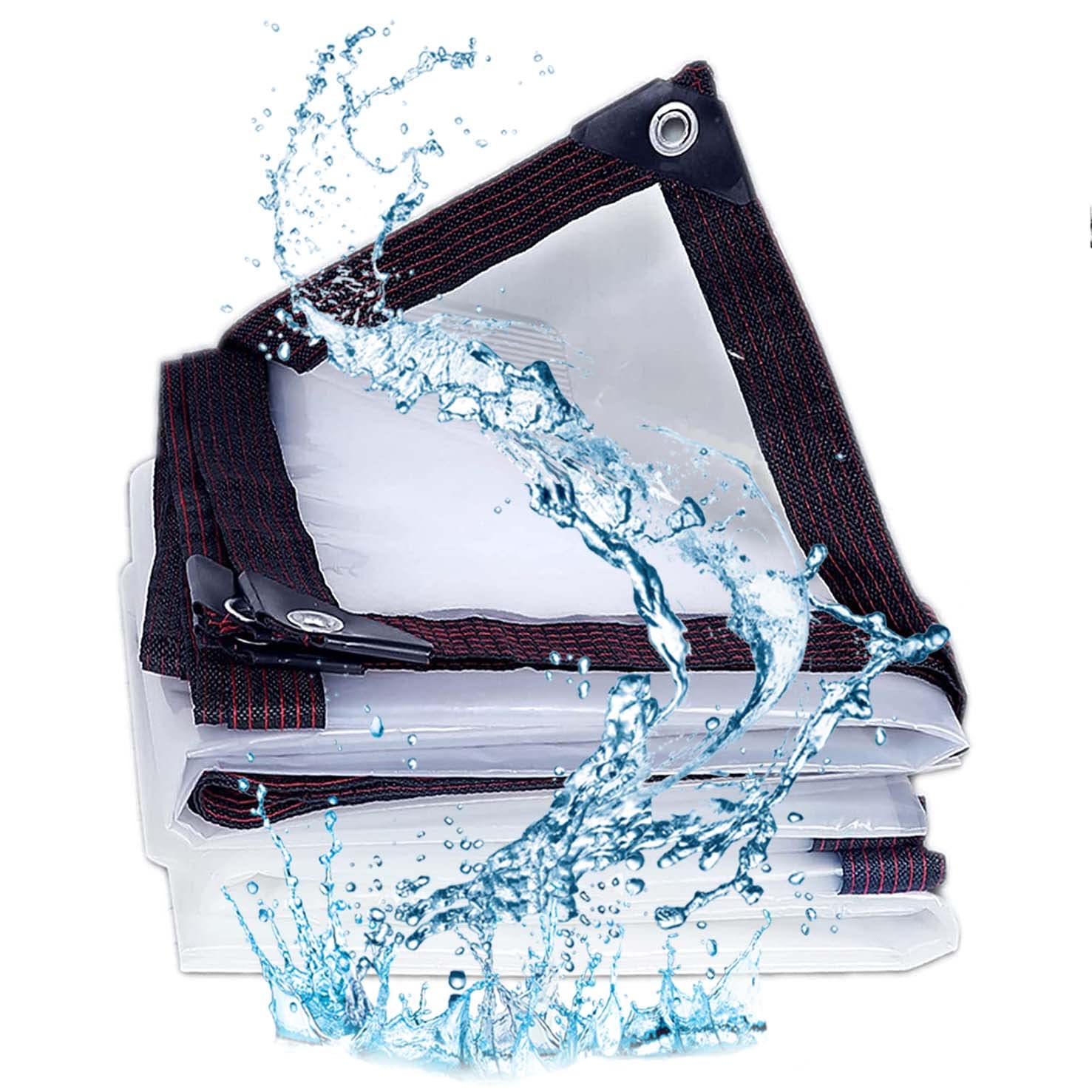What is Clear Tarpaulin?
Clear tarpaulin is a flexible, transparent plastic sheeting material used to enhance natural lighting in interior spaces. It transmits visible sunlight with high levels of light transmission.
The most common material for Tarpaulin Sheet is polyethylene due to its lightweight, durable qualities. Polyethylene has a transmission range of 85-90%, admitting ample daylight while providing UV protection.
Tarps are offered in a variety of thicknesses to suit different durability and optical needs:
Thinnest 6-10 mil tarps maximize transparency but pose puncture and tear risks if unprotected. Used loosely over amenities like pergolas.
Mid-range 12-16 mil strike a balance of 70-85% light transmission with suitable puncture and wear resistance for standard outdoor applications.
Thickest 18+ mil tarps in the 60-75% transmission range withstand heavy foot traffic, wind, and abrasion for more industrial uses like building extensions.
Other key properties include:
- Water resistance – Tarps readily shed precipitation to prevent interior pooling or leaks.
- Flexibility – Can form contoured shapes to complement structures and self-repair occasional minor tears.
- UV resistance – UV-blocking additives in tarps of 10 mil and above prevent fade and degradation from sun exposure.
How Does Clear Tarpaulin Improve Natural Lighting?
Waterproof Clear Tarpaulin is very effective at transmitting natural light into interior spaces because of its high light transmission properties. Unlike glass, which can make shadows and problem areas, clear tarpaulin serves to uniformly diffuse incoming light. It disperses the sun’s beams across expansive surface areas, filling rooms with a soft, ambient shine.
Some key ways that clear tarpaulin improves natural lighting include:
Maximizes Existing Light Fixtures:
At the point when installed over windows, skylights, or different openings, clear tarpaulin lets through near 90% of available light from the sun. This lifts illumination without the requirement for additional fixtures.
Distributes Light Broadly:
The flexible plastic material twists and diffuses sunlight, spreading it across wide inclusion areas. Light enters profound into rooms instead of focusing on little spots underneath openings.
Reduces Shadows:
In comparison to glass panels, clear tarpaulin’s semi-transparency brings about no harsh shadows or differences. Objects inside spaces remain equally lit from indirect, dispersed light beams.
Filters Harsh Effects:
UV beams are sliced while allowing visible light to pervade. This softens the sun’s harsh tops on bright days without compromising luminescence.
Customizable Light Quality:
By adjusting the tarp thickness, different ranges and intensities of natural light can be tailored to the specific necessities of plants, work areas, or events.
Which Types of Spaces Benefit Most?
Certain facility types have especially compelling applications for clear tarpaulin roofs and walls because of their light requirements. The following are some of the applications that will generally see the best advantages:
Warehouses and Industrial Facilities
Huge indoor manufacturing and storage areas demand high ceilings yet need an adequate number of conventional windows for more than adequate lighting. Clear tarps above doorway and skylight openings fill massive footprints with an even sparkle.
Event Tents and Canopies
Whether for parties, festivals, or expos, temporary outdoor shelters utilize clear tarps to transform daytime events into vibrant experiences instead of dim nooks.
Greenhouses and High-Tunnel Agriculture
Plants thrive under the natural sunlight that clear tarps maximize in growing designs. Different intensities suit varying yield stages.
Pools, Patios, and Outdoor Spaces
Lawn leisure areas gain ambiance and warmth with transparent roofing that absorbs daylight without compromising outdoors feel.
Garages and Workshops
Hobbyists and professionals alike appreciate clear tarps brightening their work environments without expensive window additions.
Temporary Emergency Shelters
After disasters like hurricanes or flooding, clear tarps over outlines provide instant haven and light for occupants’ security and morale.
FAQs
How long do clear tarps last?
Clear tarps can remain in service for quite a long while with legitimate care and maintenance. Typical lifespan ranges from 3-7 years depending on thickness, material quality, and openness to components. Indoor use prolongs longevity more than outdoor. Polyethylene tarps for the most part outlast PVC or different materials.
Are clear tarps easy to install and remove?
Installation is relatively simple for most clear tarp applications. They highlight grommets, tie-downs, and other reinforcement for fastening to outlines without heavy lifting equipment. Expulsion is likewise straightforward. However, exceptionally enormous industrial tarps might require equipment for handling.
Do clear tarps affect interior temperatures?
They can assist with moderating temperatures the two ways. Clear tarps permit warming sun oriented heat gain in chilly seasons while likewise transmitting daylight to decrease artificial cooling needs all year. Appropriate ventilation is still important to prevent nursery effects in insulated areas.
What are some alternatives to clear tarps?
Alternative options include misted/glazed plastic films, retractable fabric awnings, slatted rooflights, and conventional glass skylights. However, none match the lightweight functionality and affordability of clear tarps for dramatically increasing natural illumination.
How do I clean clear tarps?
A mixture of dish cleanser and water applied with a wipe or strain washer typically removes surface dirt. For tougher soils, utilize non-abrasive cleansers. Always rinse thoroughly. Avoid dissolvable based cleaners which can harm tarp material over the long run. Storage folds ought to likewise be cleaned periodically.
Are mildew or mold an issue?
With legitimate airflow and drainage, mildew is rarely an issue on clean tarps. However, aggregated dirt or constant soggy conditions could encourage mold development. In such cases, a diluted fade solution might assist followed by a water with rinsing. Prevention through fastening and site design is ideal.
Conclusion
In rundown, clear tarpaulin is an innovative, affordable item that significantly enhances natural lighting potential any place it is installed. By transmitting up to 90% of available sunlight, clear tarps multiply the illuminative impact of existing windows, skylights, and different openings to saturate interior spaces more effectively.
As opposed to shadows or areas of interest, the flexible plastic sheeting distributes daylight in a wide, even gleam without artificial enhancements. This fills volumes ranging from little patios to warehouse caves with an uplifting ambiance and improved visibility.
Read More: https://netblogz.com/
